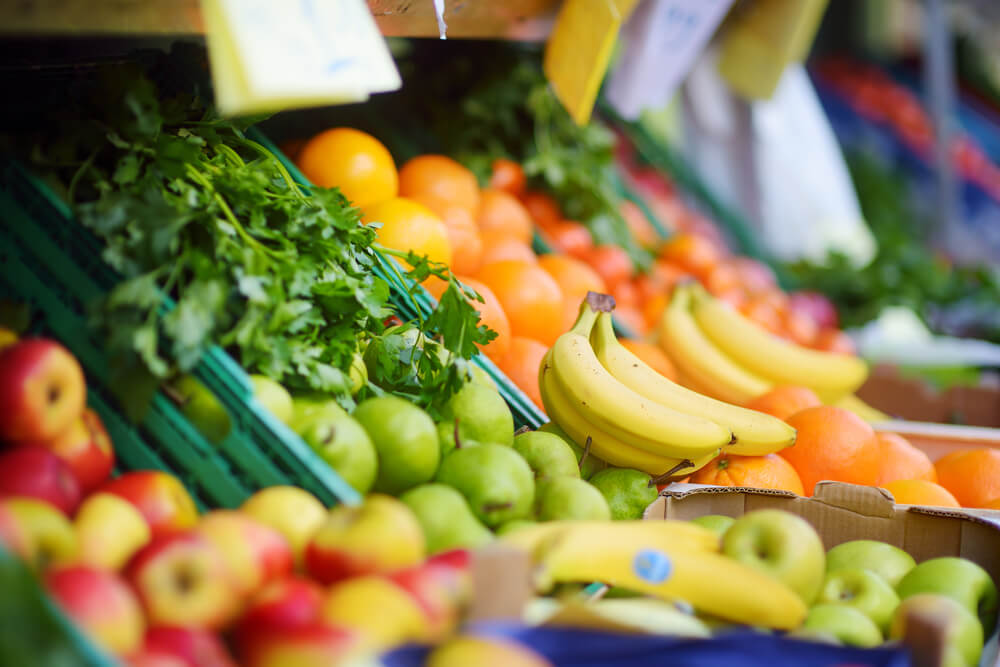Top tactics used by supermarkets to tempt us to spend more
Us Brits spend £3.1bn every week in our supermarkets. But how much of this is down to us buying what we set out to buy,and how much is a result of us making impulse purchases while browsing the aisles?
Tesco, Asda, Morrisons and Sainsbury’s (AKA, the Big Four) remain the most popular places for the majority of us to shop, but with budget retailers such as Aldi and Lidl now offering high quality products at rock-bottom prices, larger supermarkets are finding themselves under more and more pressure to make our visits to their stores as profitable as possible.

If you’re keen to save money on your weekly shop, then keeping your wits about you is vital, as there are plenty of ways that retailers try and lure us into making unnecessary purchases without us even realising it. However, there are several failsafe ways to become a savvier shopper and curb your supermarket spending:
1. Avoid the crowds when you come to browse
That blast of warm air you feel on a cold day or the cool breeze that hits you in the summer is designed to make you feel comforted as soon as you enter the store. Sweet-smelling flowers and the vibrant colours of fruits and vegetables, strategically placed at the front of the store, are there to give us the feel-good factor, while the smell of freshly baked bread from the bakery, which is also often positioned near the entrance, helps to get our mouths watering. This is all designed to stimulate our senses and get us in the mood for browsing, but rule number one is to stay alert when doing your shopping.
Supermarkets are designed to lure us into making unplanned purchases, so if you want to be sure you’re only forking out for the essentials, choose a less busy time to do your weekly shop. Buying groceries during quieter periods means less noise and fewer crowds, meaning you are less likely to rush around the shop making snap decisions on purchases.
2. Browse the whole store to find the best deals
Where products are placed in stores plays a key role in our purchase decisions. Essentials such as fresh meat and dairy products are kept in the middle of the store, in the hope that you’ll buy more than just the pint of milk you went in for. You’ll also find impulse buys, such as sweets, snacks and gum, near the checkouts, so that just before you leave you’re tempted to treat yourself after successfully completing your shopping.
Supermarkets also place the same products in different places throughout the store, however did you know that some product locations are more expensive than others? For example, dried fruit and nuts are cheaper in the baking aisle than in the snack section, and you can save money on rice by buying it in bulk in the world foods aisle. So,as well as trying to avoid making impulse purchases during your shop, see if you can find the same product for a cheaper price somewhere else in the store.
3. Always stick to the list.
The choice of products on offer in today’s supermarkets is overwhelming, and retailers take advantage of this fact by creating opportunities for us to make purchases based on convenience. Brands pay a premium for their products to be placed at the end of aisles in the hope that we’ll choose the products we see on these shelves rather than journeying down the aisles to browse for potentially cheaper alternatives. Many products have recipe ideas on them, however some supermarkets have now gone one step further by giving out recipe cards and storing all the necessary ingredients together in fridges around the store.
It may sound obvious, but ensuring you don’t stray away from your shopping list is one of the best ways to save. The eye-watering imagery on recipe cards and the convenience of having all the ingredients you need right in front of you may be enough to make you consider swapping your dinner plans and spend more by trying out something new. But it’s important to remember that the items on your list are there for a reason, and you should always fully consider the reasons behind choosing to buy additional items or alternatives.
If you find that you’re prone to making impulse buys when you’re out shopping, try doing your grocery shopping online, as this will help keep you away from temptation and ensure you only buy what you had originally intended.
4. Assess whether a deal is really a deal
Many of us will switch onto autopilot when it comes to doing our weekly shop, and retailers put great effort into tracking the journeys we make around the store so they can throw obstacles in our path, such as irresistible deals or displays to capture our attention.
Studies show that we’re naturally drawn towards signs and red labels, even if they not offering a price reduction. Similarly, BOGOF deals and multibuys are designed to make us believe we are getting a great deal, however this may not always be the case.
The golden rule is, if it sounds too good to be true, then it probably is. Do the maths and find out how much you’re actually saving, even if it means taking a calculator to the supermarket. Many retailers place offers at the front of the store or at the end of aisles, away from the similar products in the range, so make the journey to the correct aisle to check whether the discounted top-end item is really better value than the supermarket’s own brand.
5. Take a closer look at the shelves
A lot of thought also goes into how products are stored on shelves, with retailers placing the most expensive products at eye level, meaning we have to reach down for cheaper alternatives. Products specifically targeting children, like kids’ breakfast cereals, will also be placed lower on the shelves and have more eye-catching packaging. Some shelves or displays will even be made to look emptier, making us think that a product is in demand and likely to run out!
Always scour the shelves properly to check for cheaper alternatives nearby, and remember to look up and down, as well as across, when looking at all products in the range. It’s common for own-brand products to have similar packaging to high-end alternatives, so be sure not to accidently pick up a pricier product if you’re looking to save some money.
Also, if you’re shopping with kids, then try and stay strong! There’s plenty of products in supermarkets guaranteed to catch their eye, but sticking to your purchases as planned and keeping the kids busy with tasks such as fetching items for the trolley will help keep them occupied while you shop.
6. Be prepared before entering the store
Taking along a shopping list is one of the best ways to avoid spending money on unnecessary purchases, but there are also steps you can take to help you fight temptation before you even set foot in the store.
While it may be more convenient to push a trolley around the supermarket than carry a basket, studies have shown that the larger the trolley, the more tempted you will be to fill it. When it comes to choosing your carrier of choice, don’t opt for a trolley when a basket will do. Plus, as your basket becomes too full or too heavy, you’ll be much more aware of what you’re buying and more likely to ditch any impulse buys which have snuck in during your shop.
And finally… it’s something we hear time and time again, but it’s so important to have a good meal before going grocery shopping. Hungry shoppers make impulse buys, so make sure you’re well fed and watered before venturing to your local supermarket!

